How to grow salvias: a step-by-step guide to growing these summer flowers
Our tips on how to grow salvias will help you bring color to your garden planting scheme all summer long
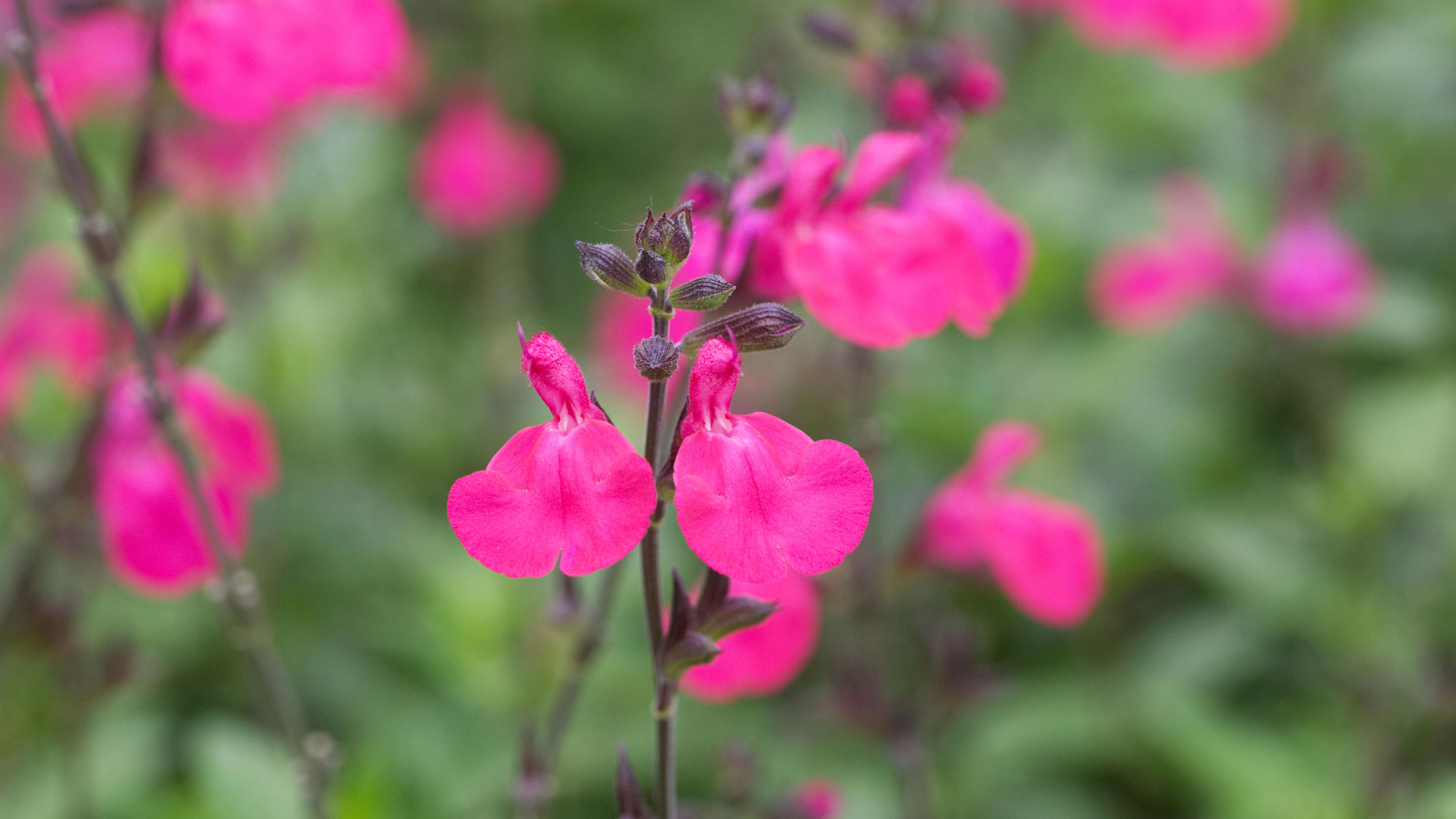

Find out how to grow salvias and you'll soon discover that they are one of the best plants to bring long-lasting color into the summer garden. They will continue blooming until late autumn too, so they're invaluable in borders and pots when other flowers start to fade.
There are over 900 different types of salvia to choose from, so you are spoilt for choice. They come in a range of colors, from dark red and pale pink to cobalt blue and cream, with annual, biennial and perennial varieties widely available, as well as shrubby versions. Whatever flowerbed ideas you have, you'll be sure to find a salvia that fits the theme.
Although part of the mint family, they're commonly known as sage plants, and the family includes the herb variety used in cooking. Some have pleasantly scented foliage so plant them near the edge of a path to enjoy their fragrance. They're a magnet for butterflies, bees and other pollinators too, so make the perfect addition to a wildlife garden.
The best news of all is learning how to grow salvias is easy. We've rounded up all the tips you need to know below.
How to grow salvias: 5 quick tips
These easy-going plants are a cinch to grow and you'll soon wonder why you didn't learn how to grow salvias before. Here are some straightforward tips for best results:
- Salvias need minimal TLC so are a good choice if you like a plant that's self-sufficient.
- Choose the sunniest spot in the garden if you want your salvias to thrive and reach their full potential.
- They're not fussy about soil and will even flourish in quite poor soils.
- They play a central role in drought-friendly gardens as they don't need a lot of watering. This makes them a good choice for your container gardening ideas too.
- During the growing season remove faded flowers to encourage more blooms.
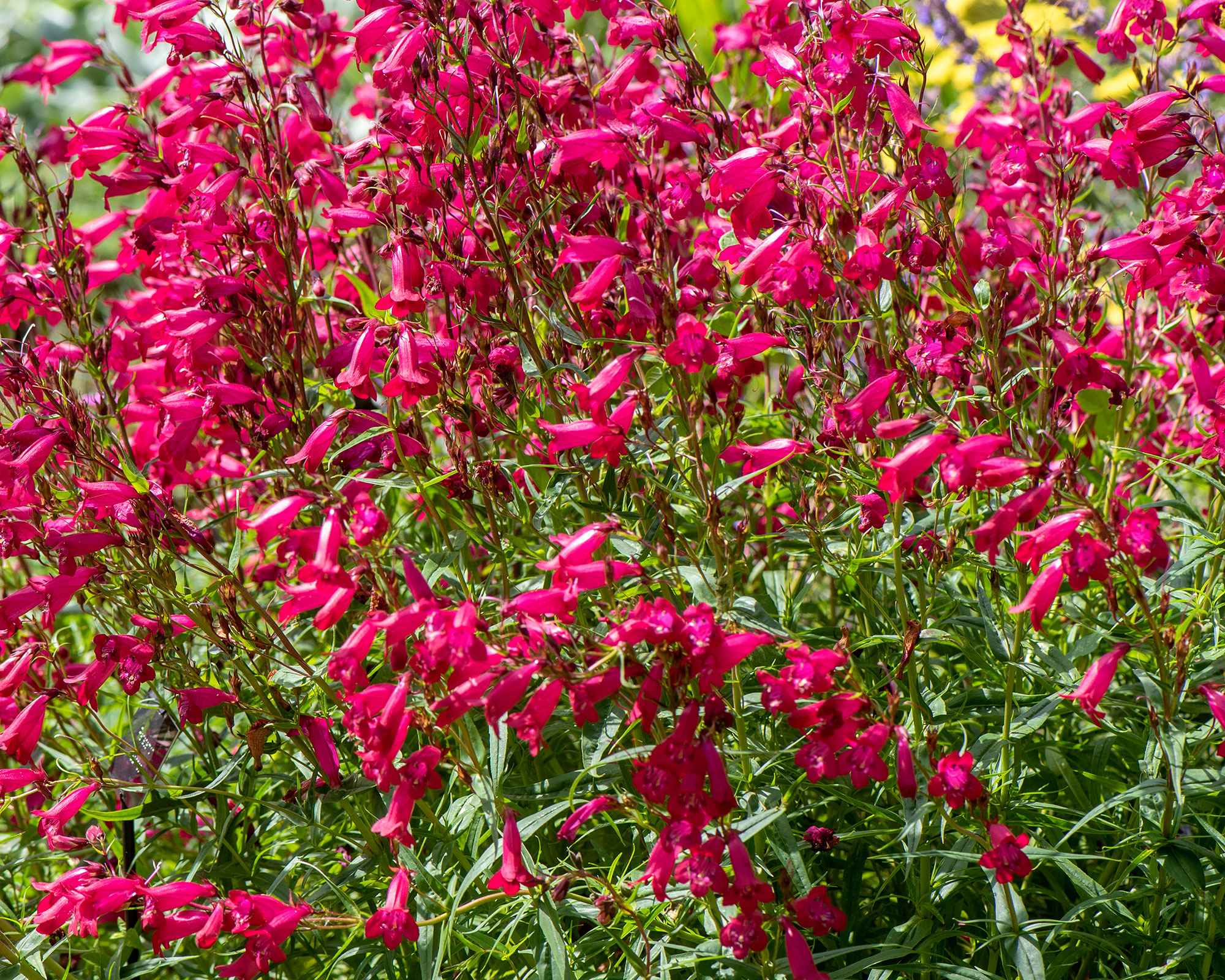
How to plant salvias
It depends on the variety but generally salvia seeds can be planted under cover in early spring, although some varieties can be sown under cover in autumn too. They can also be direct sown in late spring and summer (more on this below).
If you have ordered tender varieties, these can be planted out once all risk of frost is over, usually by the end of May.
Plant in moist but well-drained soil in a sunny, sheltered spot. Add additional grit to the soil to protect against waterlogging in winter.
Salvias don't like to be crowded. When planting in groups or mixing them with other plants in borders, space them far enough apart to allow the air to circulate around them.
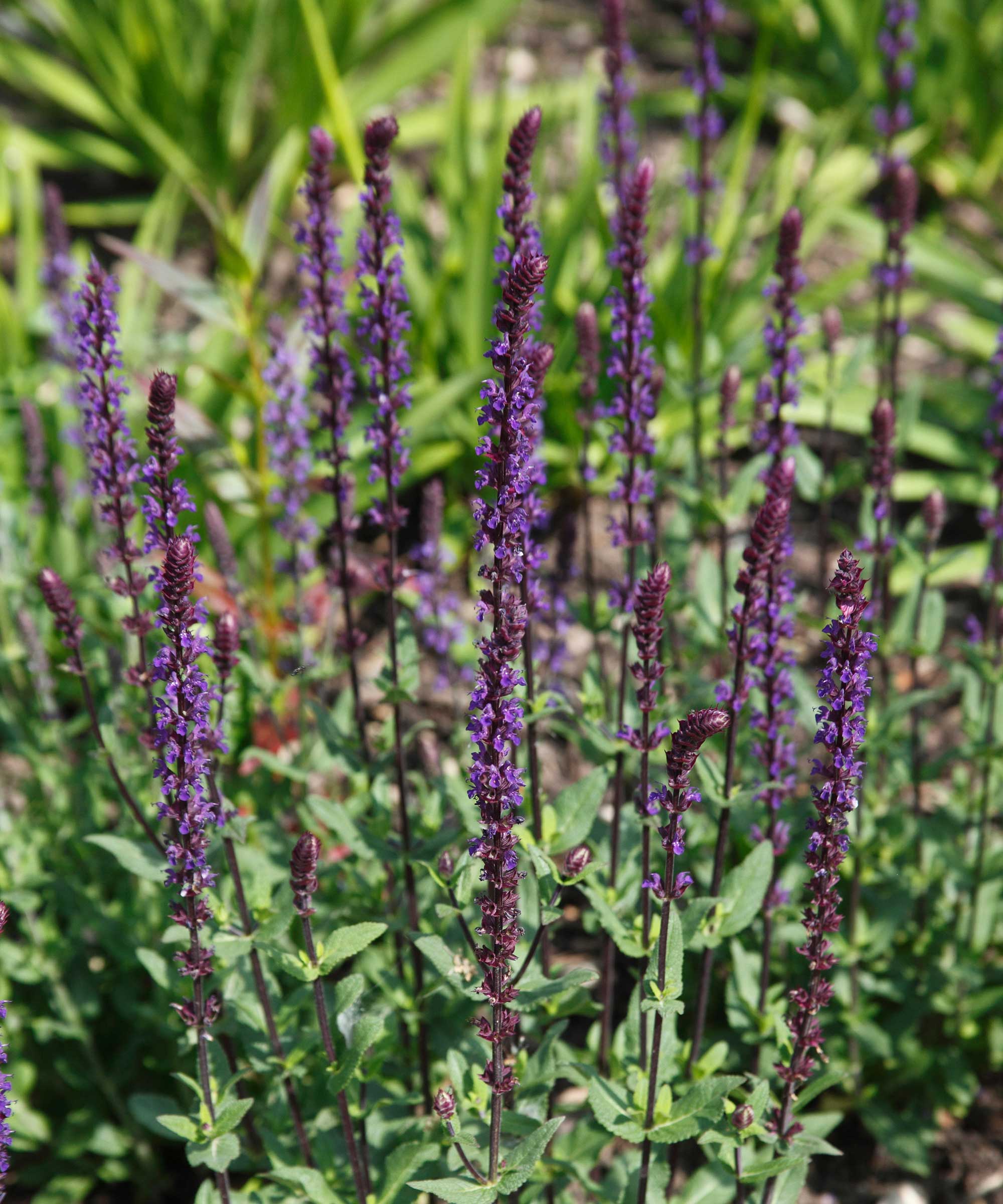
Where do salvias grow best?
Picking the right spot for salvias is important.
'For planting out, choose positions where soil is well drained. On clay soils in wetter regions, plant into raised beds for better drainage,' says Anne Swithinbank for Amateur Gardening. They thrive in full sun (a south-facing location is ideal) with shelter from cold winds. But many varieties (typically those with light-colored flowers) will also do well in part-shade. However, you don't tend to get as many flowers.
Salvias work particularly well growing along garden paths because of the way they spill over and soften the edges.
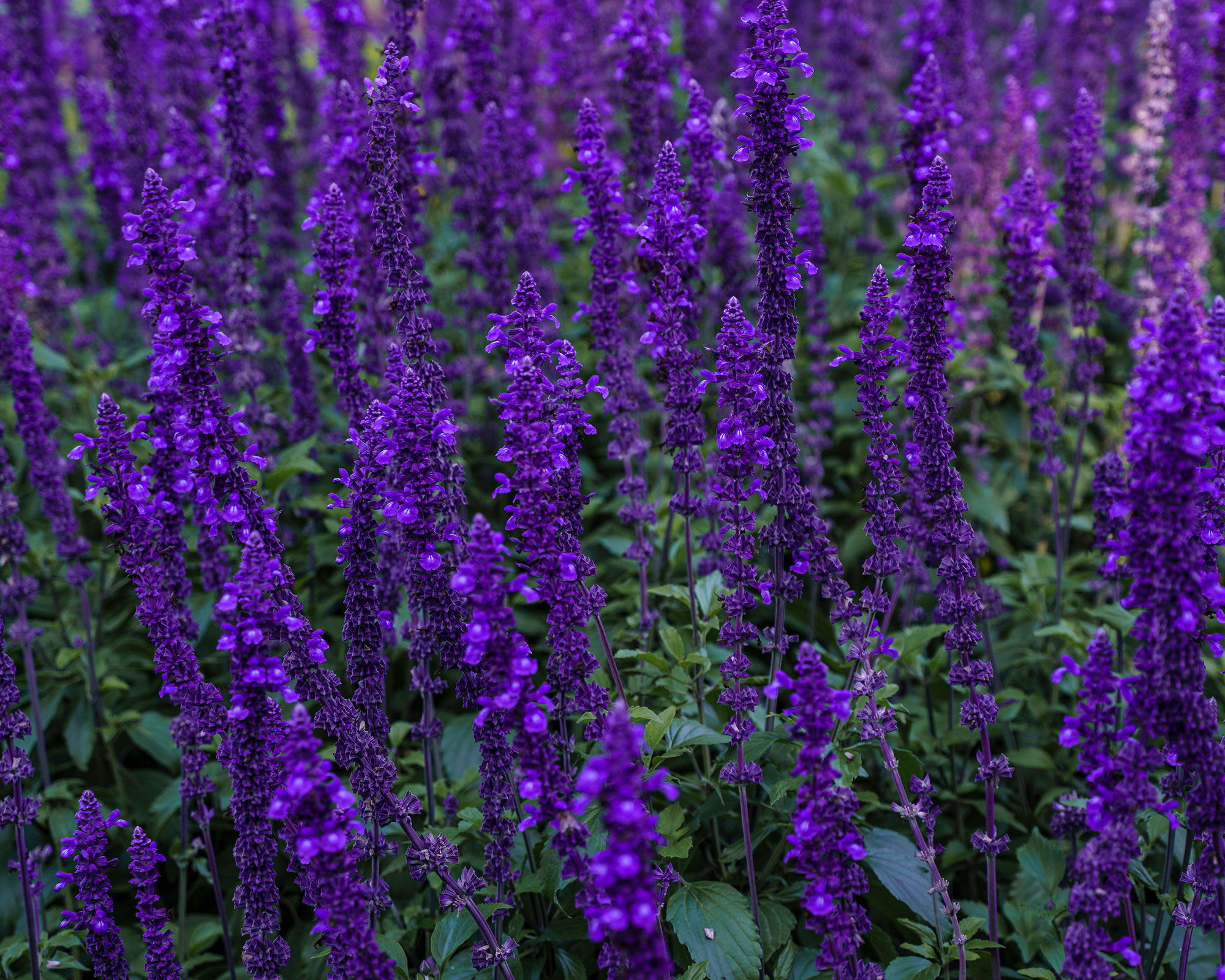
How to grow salvias from seed
Plug plants and larger potted ones are widely available from garden centers and online plant specialists but you can also sow your own seeds with great results. It's very easy to do.
If you're growing hardy annual salvias from seed, they should be sown under cover between February and April and/or late August to September. You can also direct sow the seeds in May or August where you would like them to grow.
Here's how to direct sow seeds:
- Make sure the soil is well prepared and weed free. It should be fine and crumbly. Use one of the best garden rakes to level the surface.
- Water the soil with a fine spray before planting the seeds. Sow them thinly over the surface. A finger-width apart is usually about right for small seeds. Use a rake to gently cover the seeds with soil.
- Label the patch of soil so you don't forget where you've planted your seeds and remember to keep them watered during any dry spells.
- It won't be long before your seeds start to sprout. This can be any time after as little as a few days depending on how warm it is. Cover with a layer of horticultural fleece if you want to speed things up.
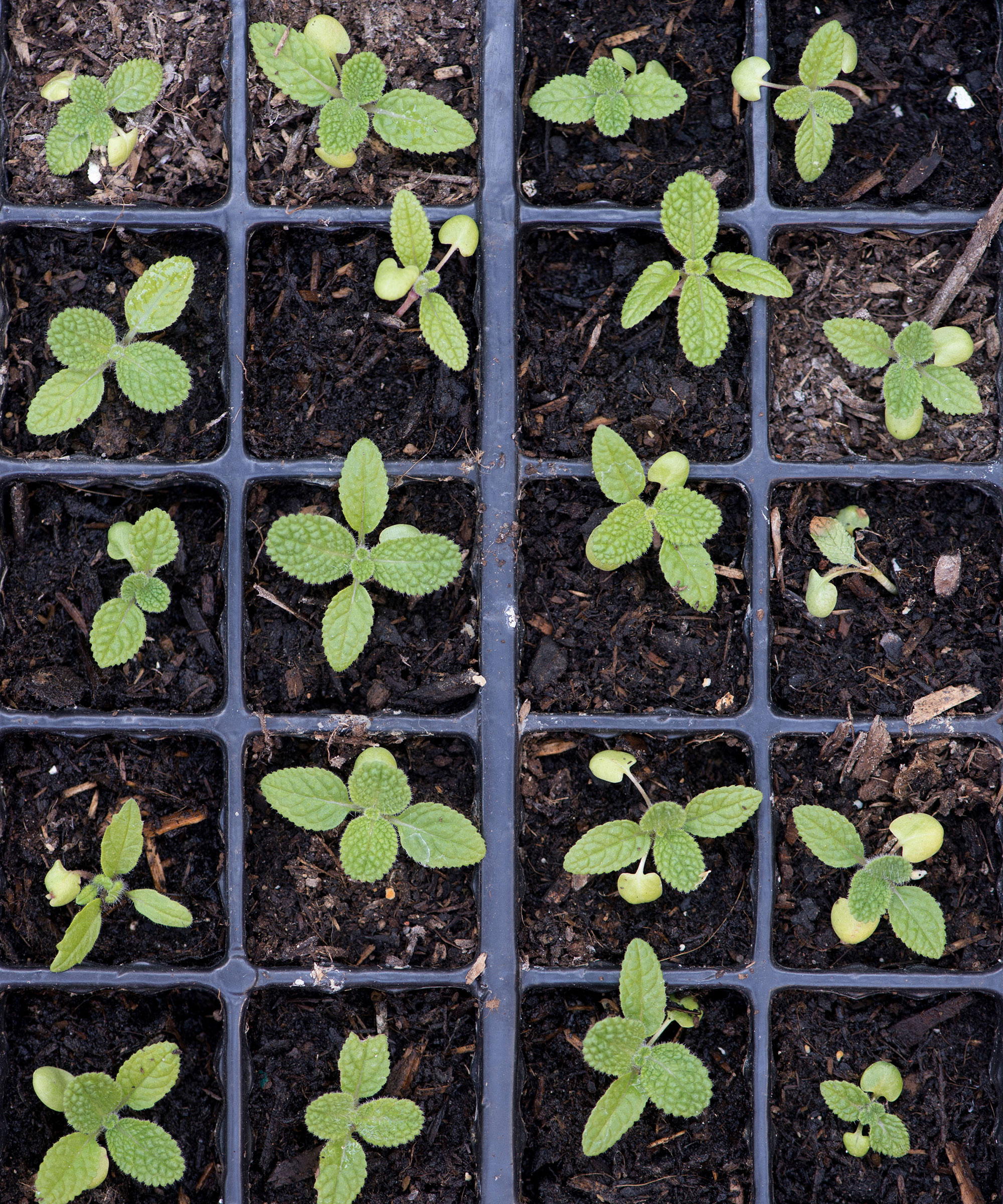
How to grow salvias from cuttings
Looking for cheap garden ideas? It's easy to make new plants as salvias can be propagated by taking cuttings.
You'll soon get the hang of how to grow salvias this way. Sometimes if your cuttings are strong and healthy you can even take cuttings from your cuttings before planting them out!
Here's how to take salvia cuttings:
- With a sharp knife cut sections of stem 3.9–5.9in (10–15cm) long, just above a bud. These can be taken from either main or side shoots.
- Trim cuttings below the lowest leaf node, nip out the growing tips and remove any large leaves.
- Loosely fill a 6in terracotta pot with a nutrient-packed loamy compost with added horticultural grit (although any potting compost will do, loamy is best).
- Make six holes with a pencil around the edges of the pot and push in the cuttings.
- These soft cuttings will probably wilt after you take them but will soon recover. Don't overwater them though in the effort to get them to perk up.
- When cuttings look strong and healthy and have taken root, generally in about two months, remove them from the pot and carefully separate the root balls, then pot up individually or move to the garden.
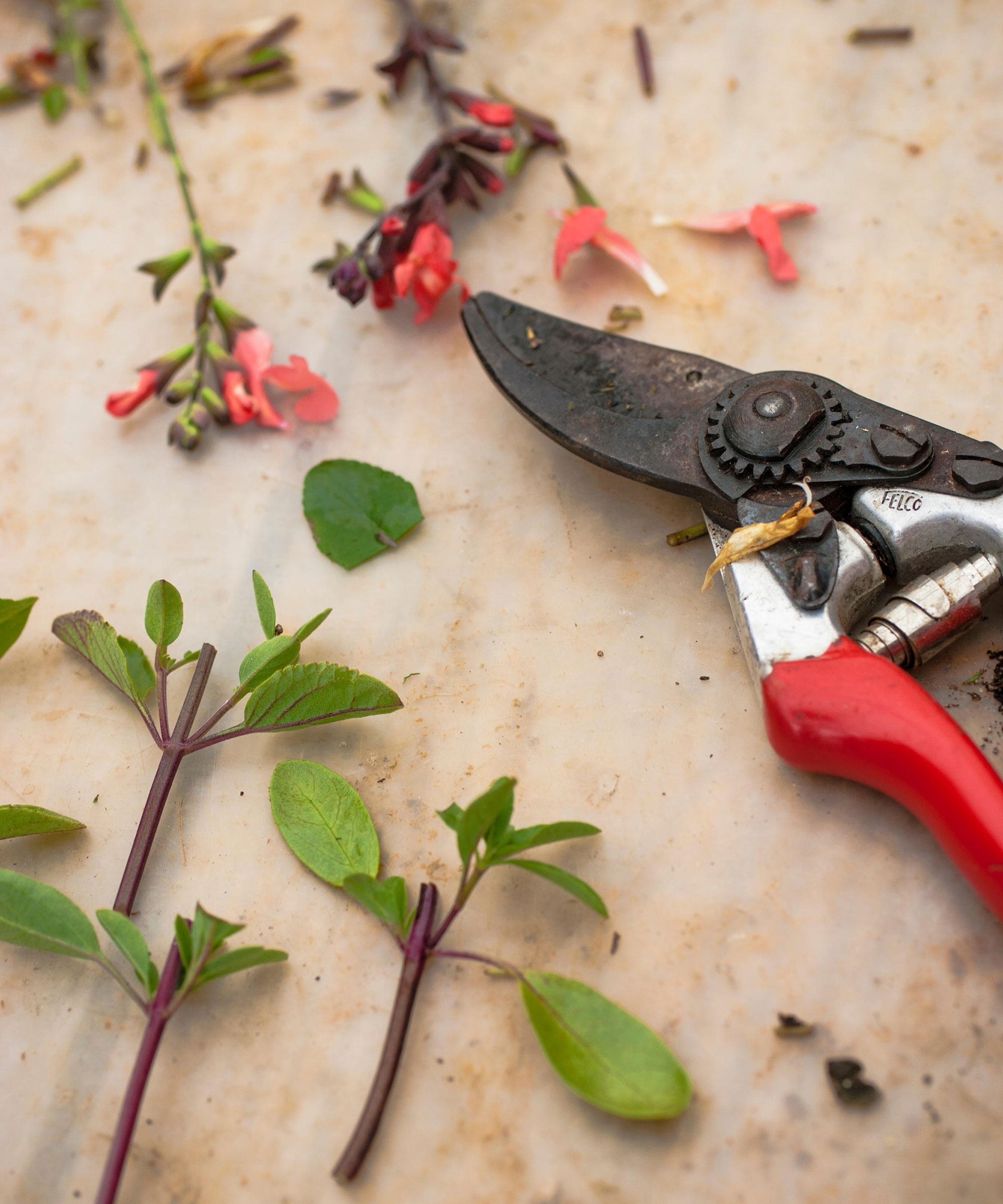
Do salvias grow in pots?
Salvias thrive in pots. The short varieties serve as fillers, while taller types can be used as centerpieces.
Plant up a container with a good multi-purpose compost such as John Innes No. 3 mixed with some horticultural grit in a ratio of 3/1 to provide the right sort of free-draining environment that salvias love. 'Make sure there are adequate drainage holes,' says Anne Swithinbank for Amateur Gardening.
They look great planted en masse or on their own. If you want to mix things up, the blue and purple ones look gorgeous combined with plants that have silvery foliage such as santolina (also known as cotton lavender) or the silky gray silver bush plant.
It’s a good idea to plant salvias in containers if you experience cold winters as the plants will be protected against harsh weather. Move them into a sheltered position and raise them up on pot feet to help drainage. Repot in fresh compost each spring or freshen the existing mix with a top-up of new soil.
Don't forget, you'll find plenty of garden planter ideas in our dedicated feature.
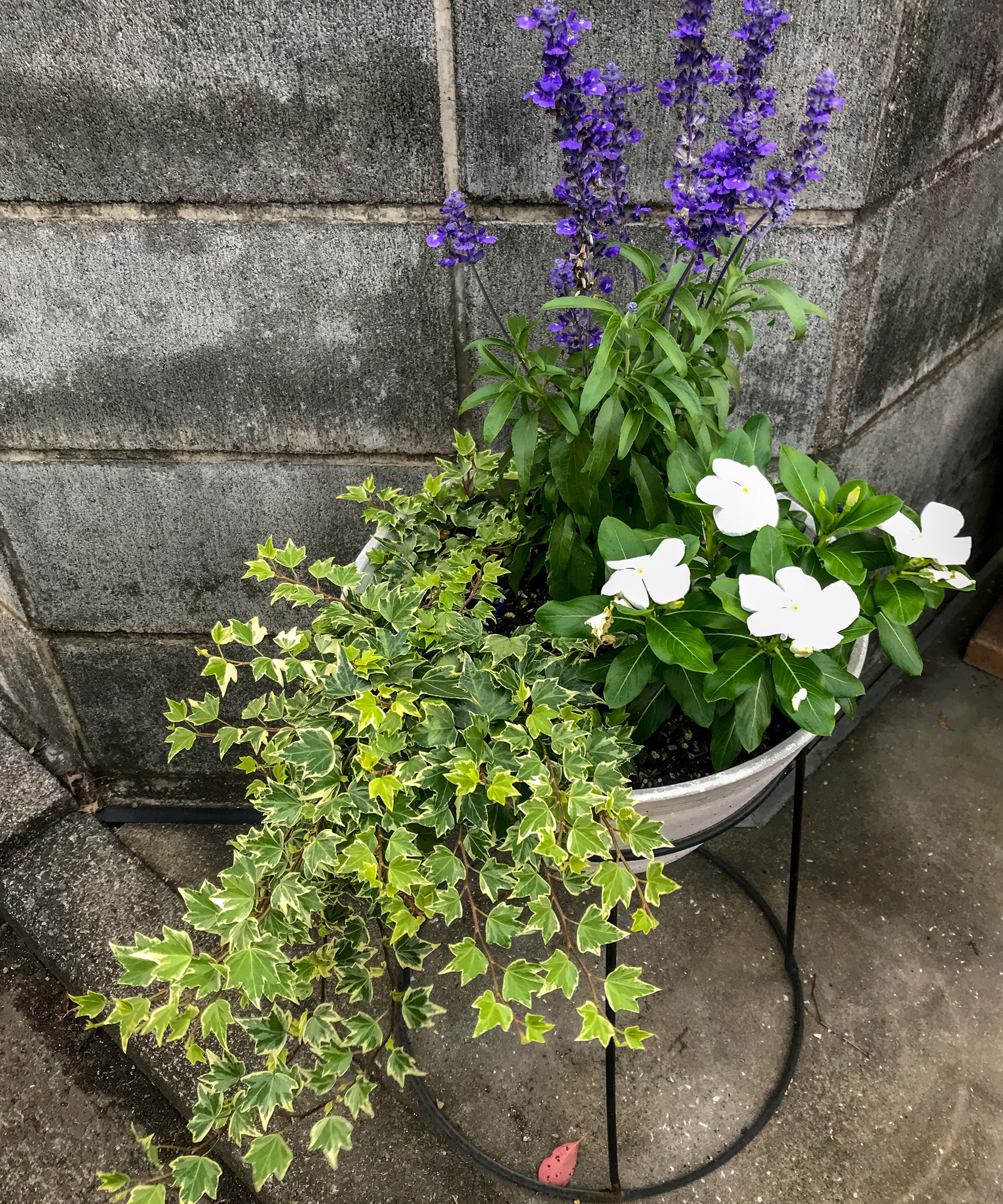
How do you take care of salvias?
Happily, salvias are super easy to care for – perfect if you're on the lookout for low maintenance garden ideas.
Most varieties of salvia are drought tolerant once established, but will benefit from regular watering.
Deadheading is important to encourage repeat blooming. However, if you want to collect seed from your salvia plants leave a few flowers to dry on the plant. Collect the seedpods and shake them out into a bag or jar – there are plenty of tips on collecting seeds from flowers in our feature.
Most salvias are light feeders. A light application of fertilizer or compost in early spring is usually all that's necessary.
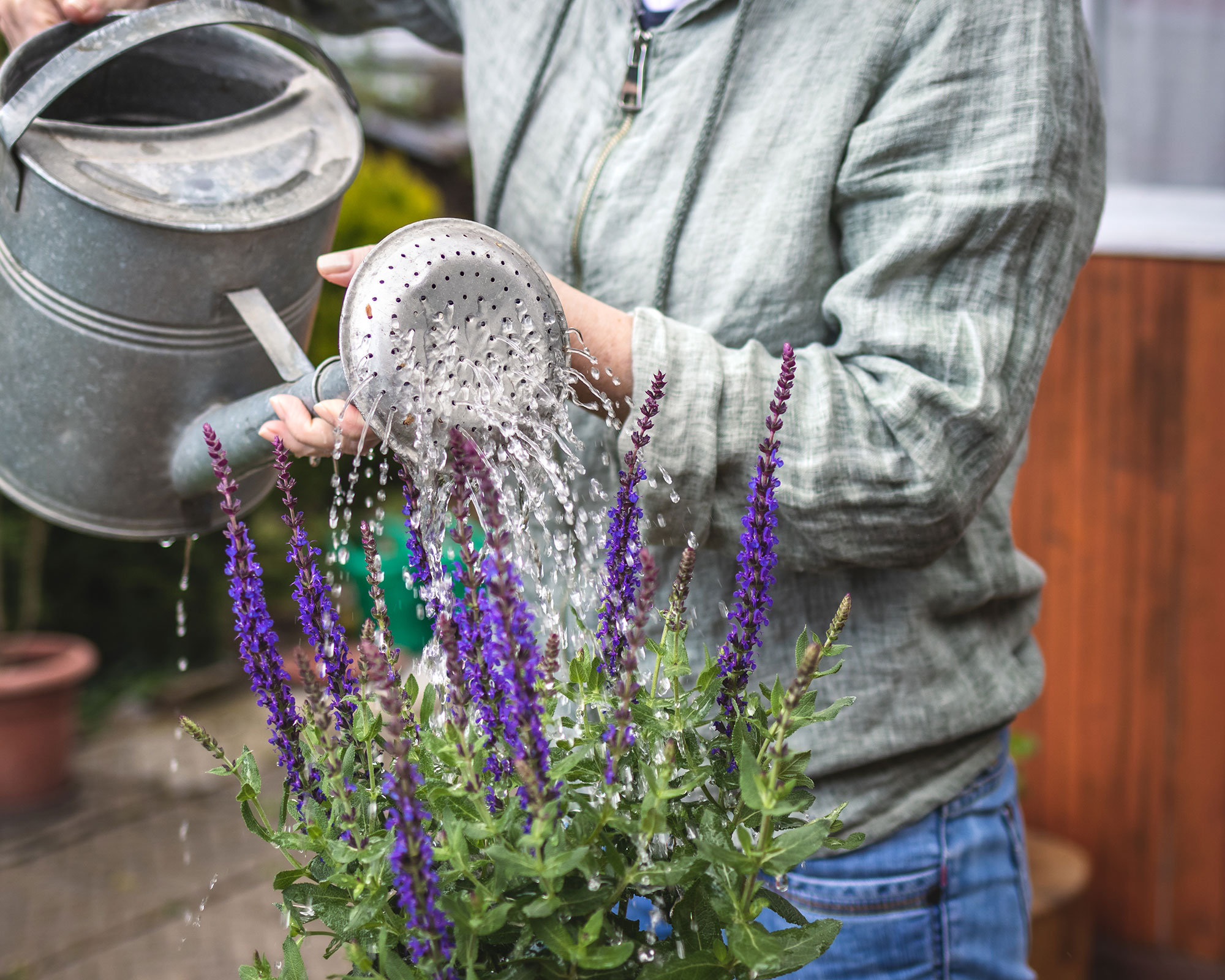
How tall do salvias get?
The tall herbaceous varieties of salvia form nice clumps and can grow up to 3.3ft (1m) every year. The shrubby varieties of salvia grow much more slowly and are easily pruned to keep them in shape. The annual varieties tend to be small, growing to around 7.8in (20cm), while the perennials can get to 4.9ft (1.5m) tall.
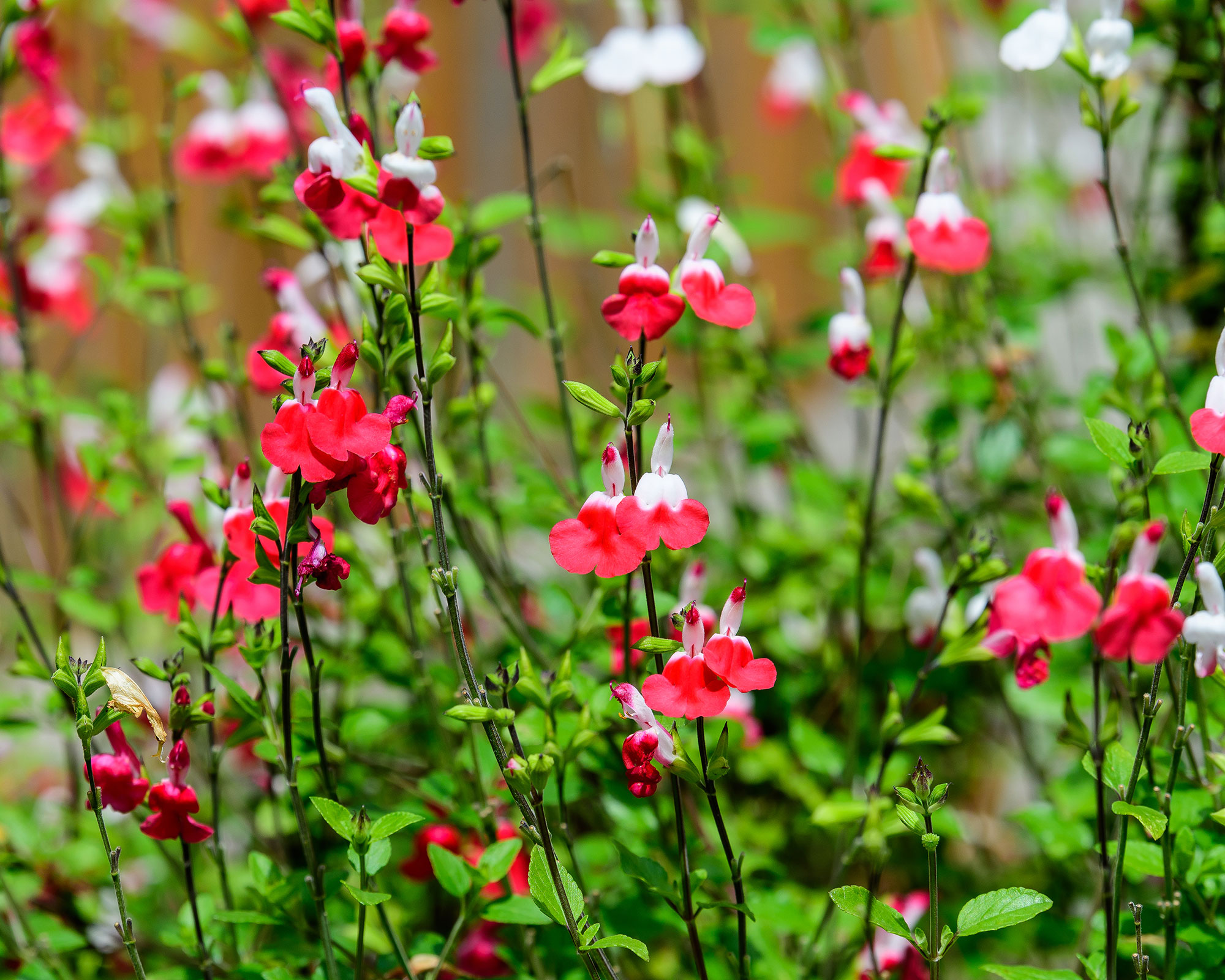
Do salvias spread?
Salvias tend to spread in the garden if they’re comfortable and in the right spot. This can work in your favor, as it's easy to divide and replant them in other areas of the garden to increase your stock for free.
Do salvias come back every year?
Whether salvias come back each year very much depends on the variety.
Annual salvias are dug up with the first frosts and are good for composting. Hardy perennial salvias can be cut back hard in spring or autumn. Half-hardy herbaceous varieties should be cut back in spring and, if you live somewhere very cold, overwintered in a frost-free place.
Wait until spring to prune shrubby varieties, too. If you do it in autumn any new growth could be damaged by frost.
You can find more info on how to prune salvias in our guide.
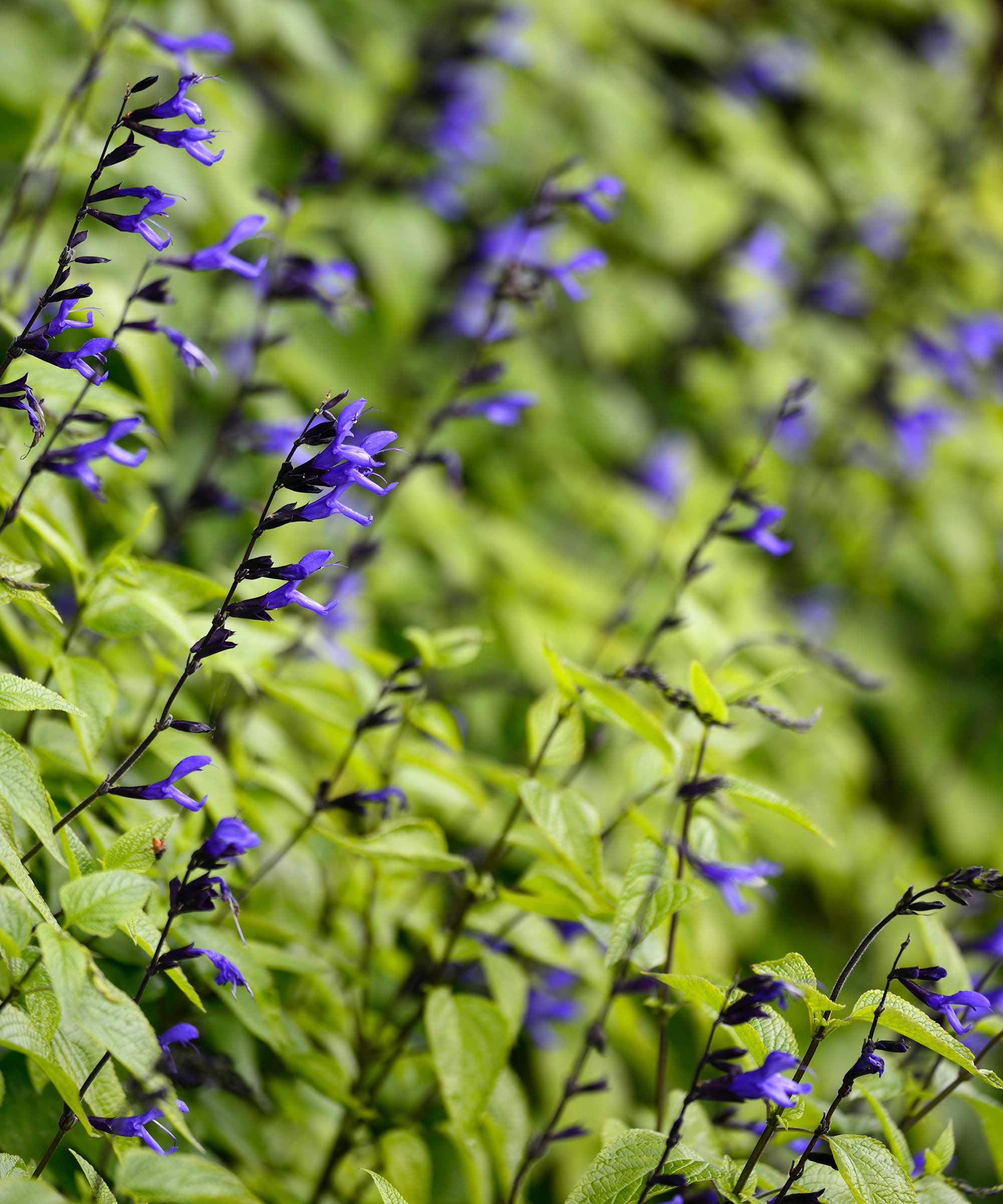
What problems affect salvias?
No serious disease or pests affect salvia plants and they're generally pretty sturdy.
They do have a tendency to flop though. This can be caused by over watering and also under watering; not getting enough sun; or over feeding. Either stake the plant to support it or deadhead the flowers and any spent leaves to let new ones flourish.
Experts often say that flopping is a sign that it's time to prune or divide your salvias.
How do you prepare salvias for winter?
If you experience cold winters it's best to keep perennial salvias in containers for the first year so you can move them to a sheltered spot for overwintering.
Once your plants become established they can be left outside, but pile a thick layer of mulch around the base to add a layer of protection against frost and snow.
Don't prune until spring, then cut them down to the base, and they will soon shoot up again. But take plenty of cuttings at the end of the summer just in case. That way you'll have more plants to fill the gap next summer if they don't survive. You can learn how to take cuttings from plants with our practical guide.
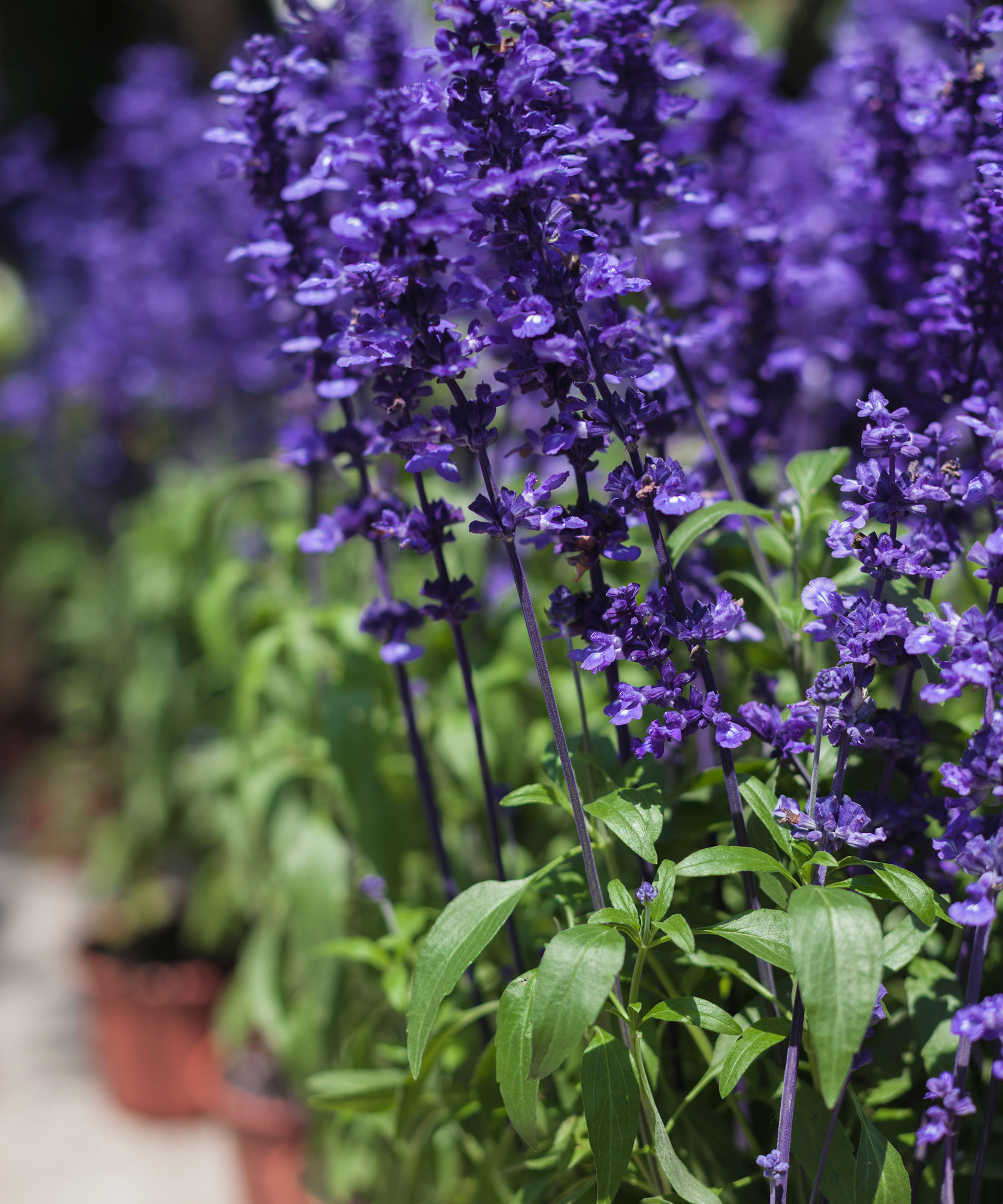
Where to buy salvias
If you're keen to put our tips on how to grow salvias into practice, start shopping now. There are lots of varieties of salvia to choose from both online and at the garden center from a huge range of suppliers.
Use our quicklinks below to make life easy and take your pick from the best there is on offer.
Where to buy salvias in the UK:
- Shop salvias at Amazon
- Shop salvias at Crocus
- Shop salvias at Sarah Raven
- Shop salvias at Suttons
- Shop salvias at Thompson & Morgan
Where to buy salvias in the US:
Varieties of salvia: 9 beautiful picks
We've picked some of our favorite salvia varieties that we think you'll love to have in your outdoor space.
1. Salvia nemorosa 'Caradonna'
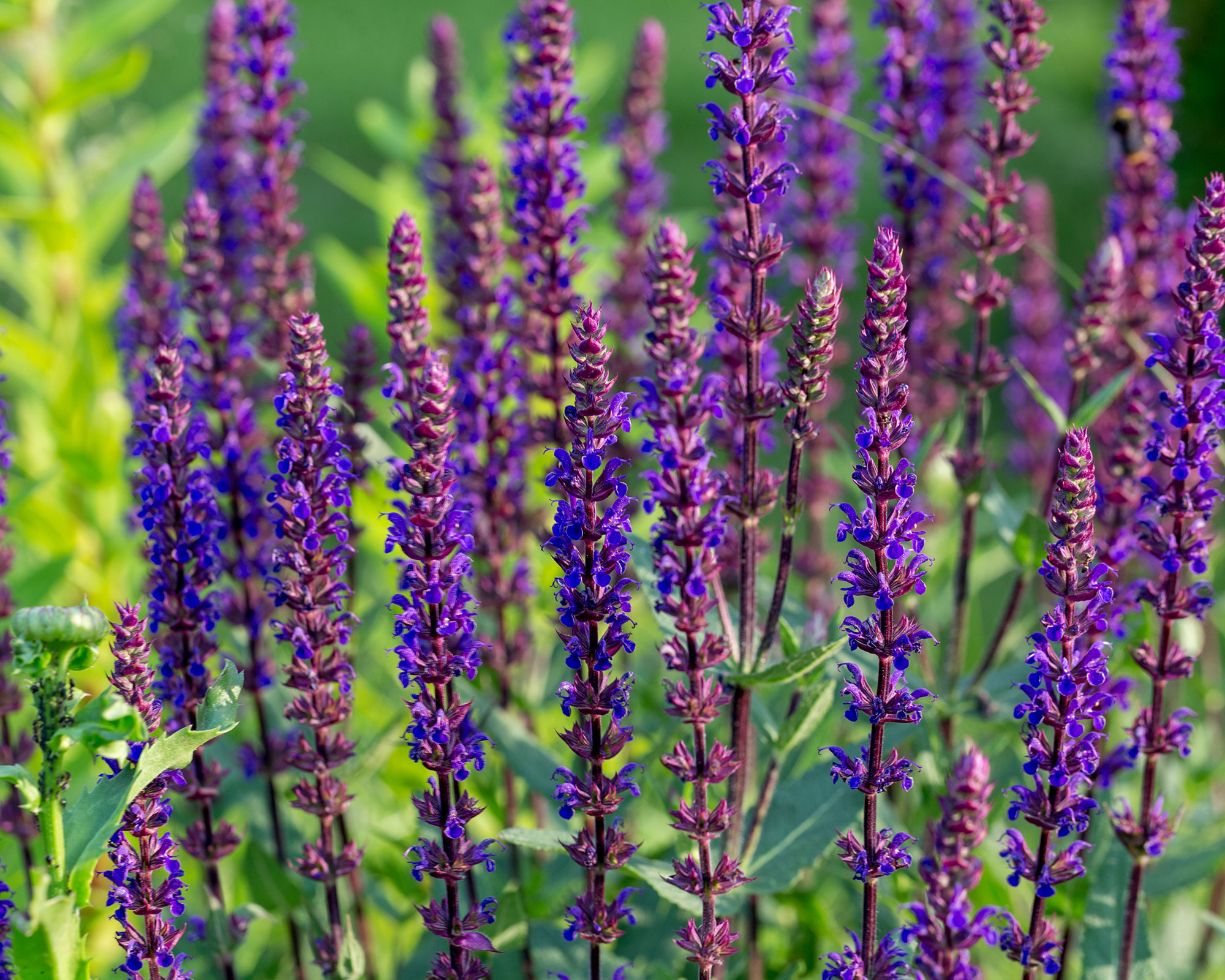
One of the best known varieties of salvia, 'Caradonna' forms a compact mound of aromatic gray-green foliage with vibrant deep violet flower spikes from June to October.
Cut back this herbaceous perennial variety to ground level in autumn and new growth shoots up in spring. It will grow to a height of 1.6ft (50cm) and spread to 11.8in (30cm).
2. Salvia guaranitica 'Amante'
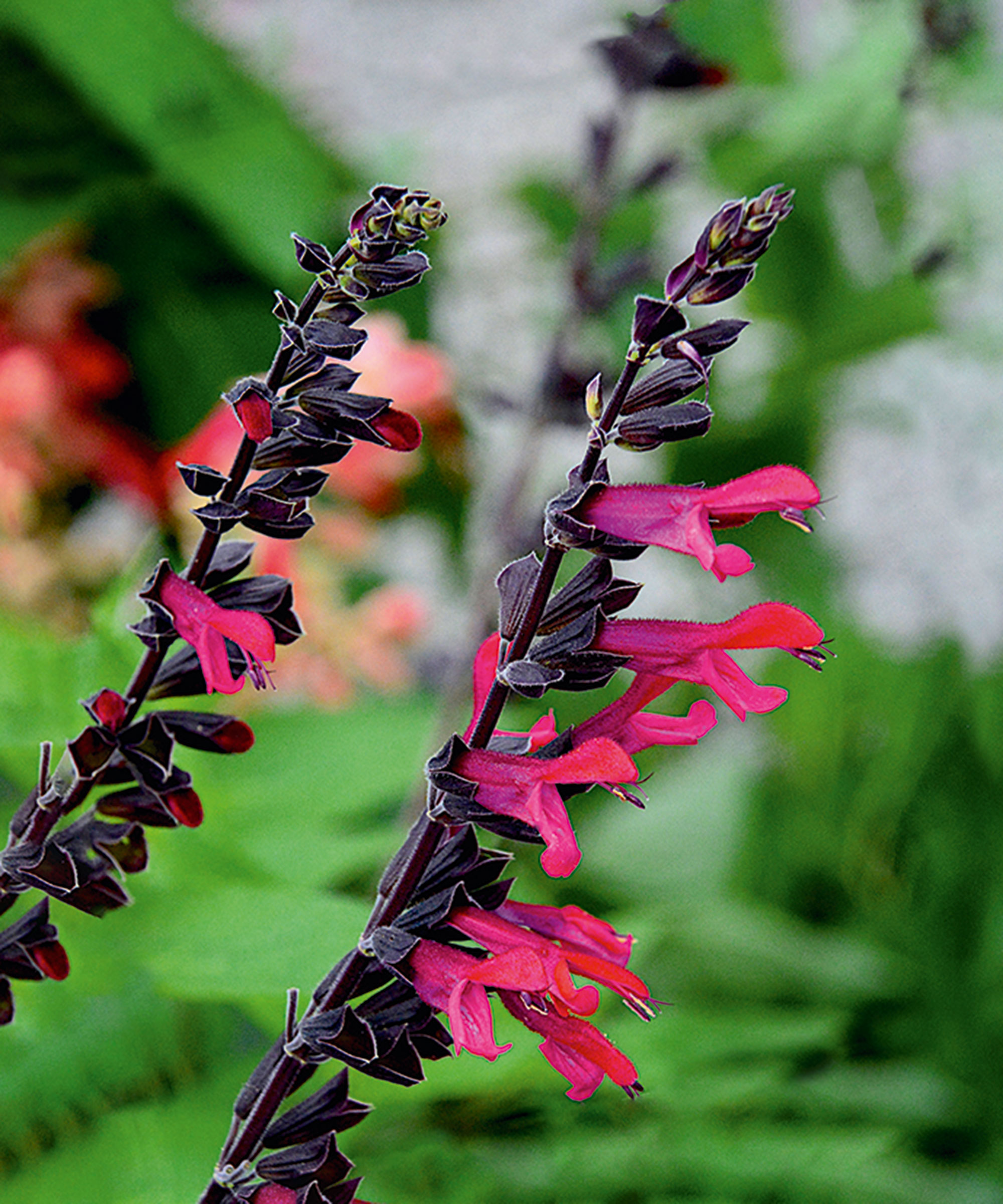
'Amante' is long-flowering with velvety deep pink petals tightly packed along stems rising up from sage-scented foliage. This plant acts like a magnet for butterflies and bees – a great addition for your wildlife garden ideas.
A taller variety, it'll grow to 4.9ft (150cm) and spread to 1.3ft (40cm).
3. Salvia patens 'Patio Dark Blue'
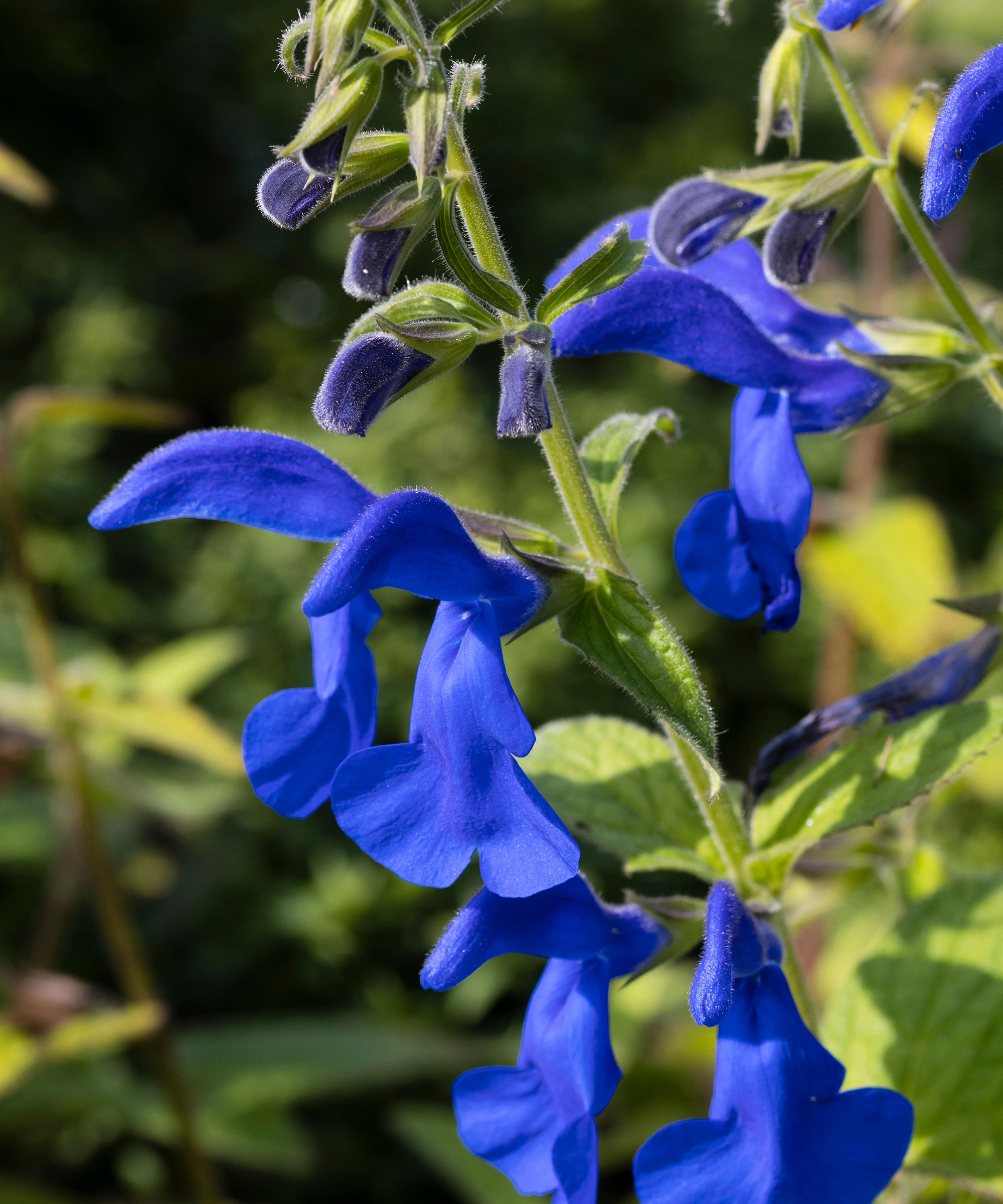
With stunning cobalt flower spikes from midsummer right round to mid-autumn, this blue beauty, also known as Gentian sage, will thrive in a sunny spot.
A first class variety of salvia, this lovely plant can survive winter in a well-protected position, particularly if sheltered from hard frosts. It'll grow to around 2ft (60cm) tall and spread to 1.5ft (45cm).
4. Salvia 'Silas Dyson'
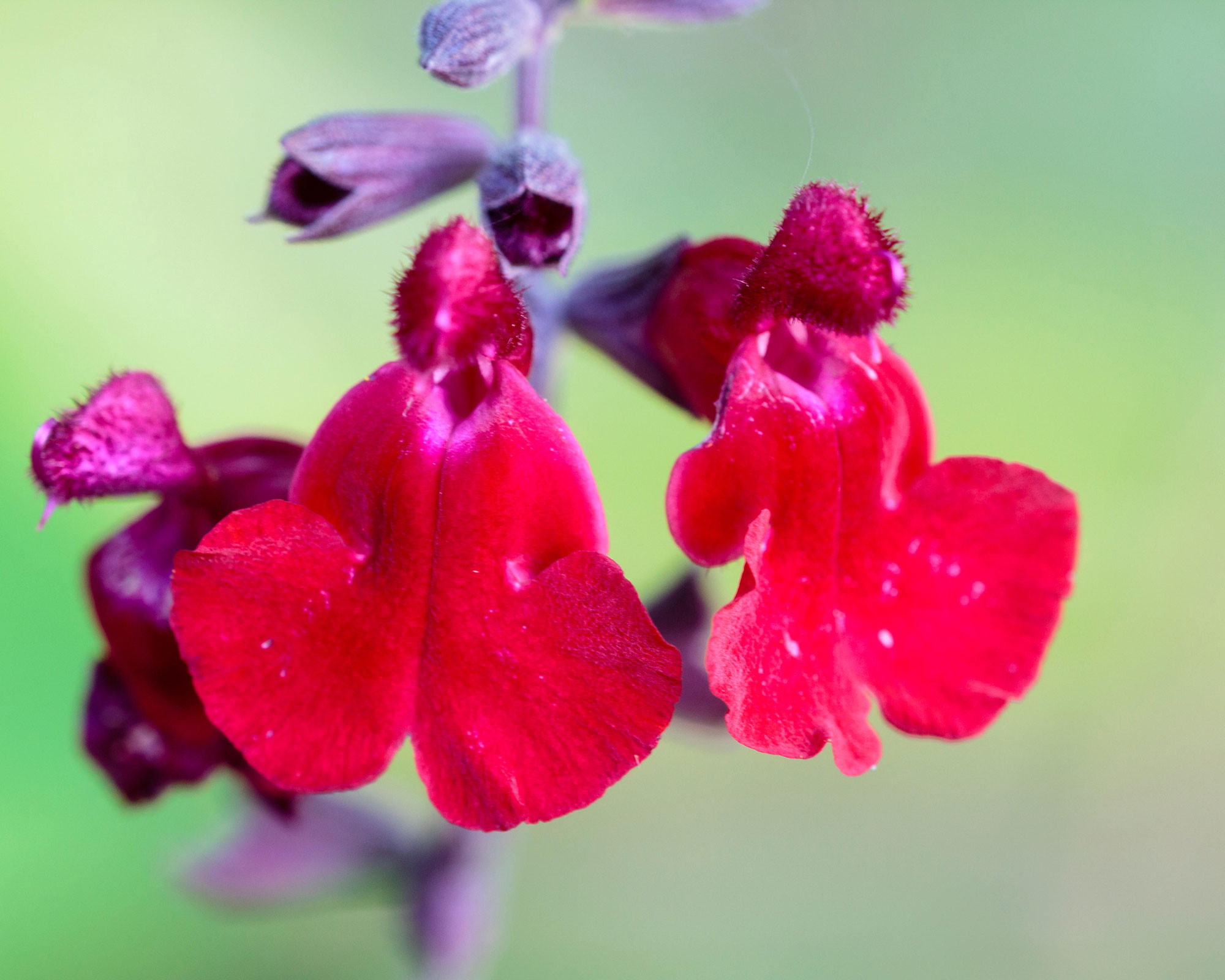
The spiky nectar-rich flowers of 'Silas Dyson' turn from rich and velvety dark red-purple buds to crimson when they open. They then take on a pinkish hue during a long flowering period from late spring to autumn.
Trim back in late summer for autumn flowering, then leave over the winter. A trim in spring, with a pair of the best secateurs in hand, will help strong regrowth. It will grow to 3.3ft x 3.3ft (100cm x 100cm).
5. Salvia 'Mulberry Jam'
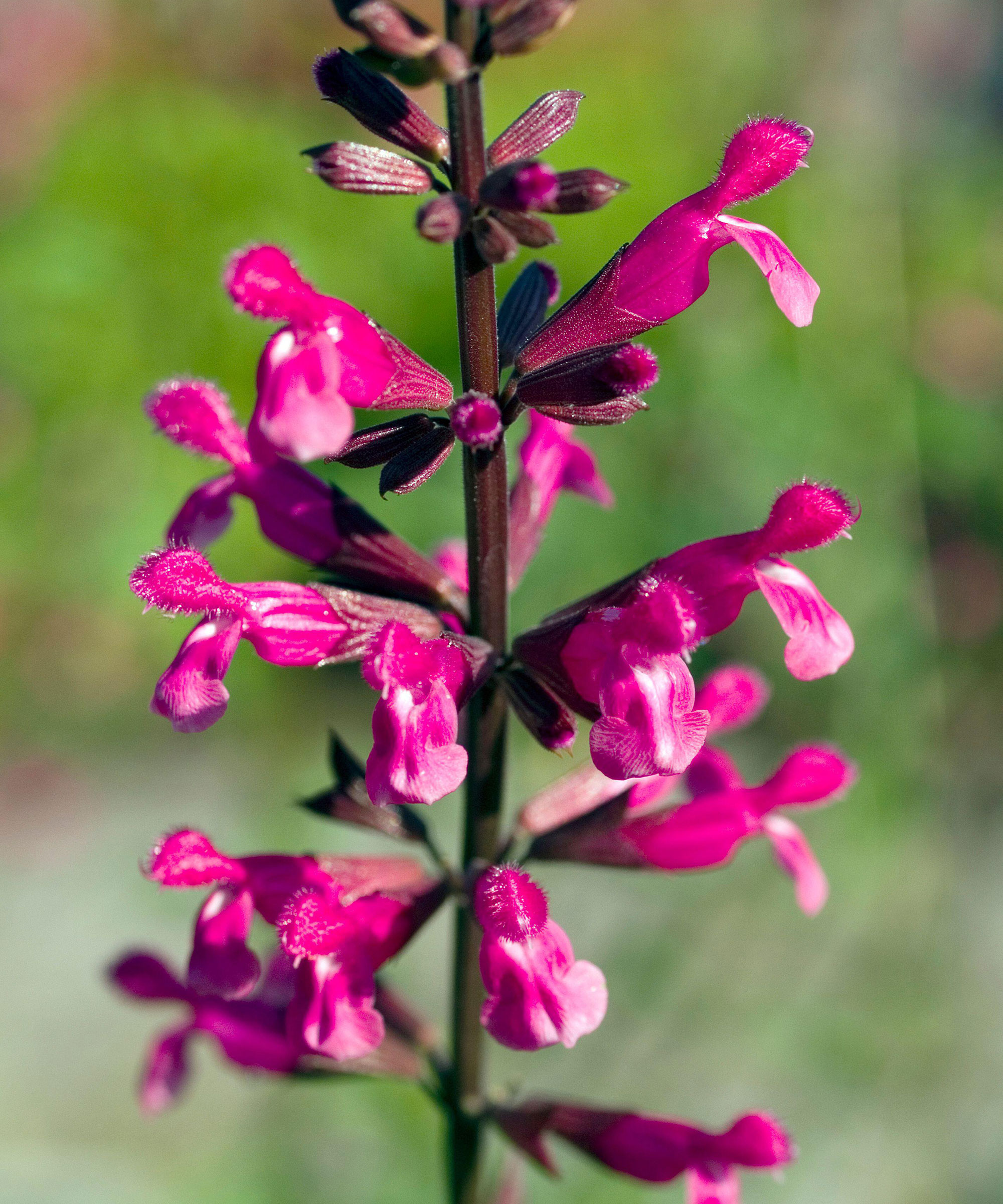
Profuse magenta blooms make this a popular choice for fans of pink plants. A slender upright perennial that forms a nice clump in borders, it loves a spot against a sheltered wall and the foliage is highly aromatic when warmed in the sun.
Its cerise color contrasts well with a pastel color scheme, or why not introduce it to your cottage garden ideas? It will grow to 4.9ft (150cm) and spread to 3.3ft (100cm).
6. Salvia 'Love and Wishes'
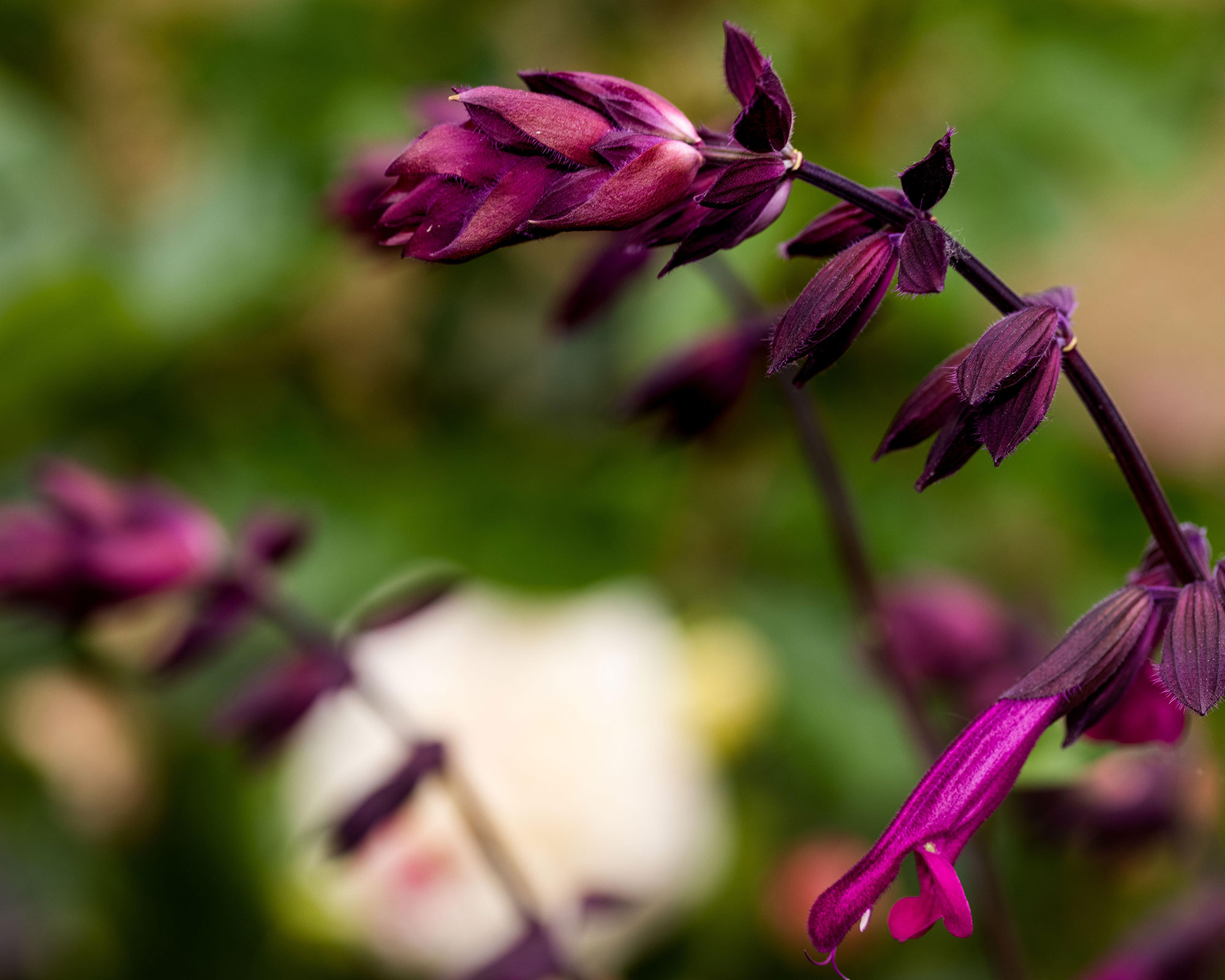
Growing to just 2.6ft (80cm) and spreading to 1.6ft (50cm), 'Love and Wishes' is good in containers as well as at the front of a border.
It features a dramatic combo of magenta flowers and burgundy stems. Deadhead regularly and it will continue to bloom well into autumn.
7. Salvia sylvestris 'Rose Queen'
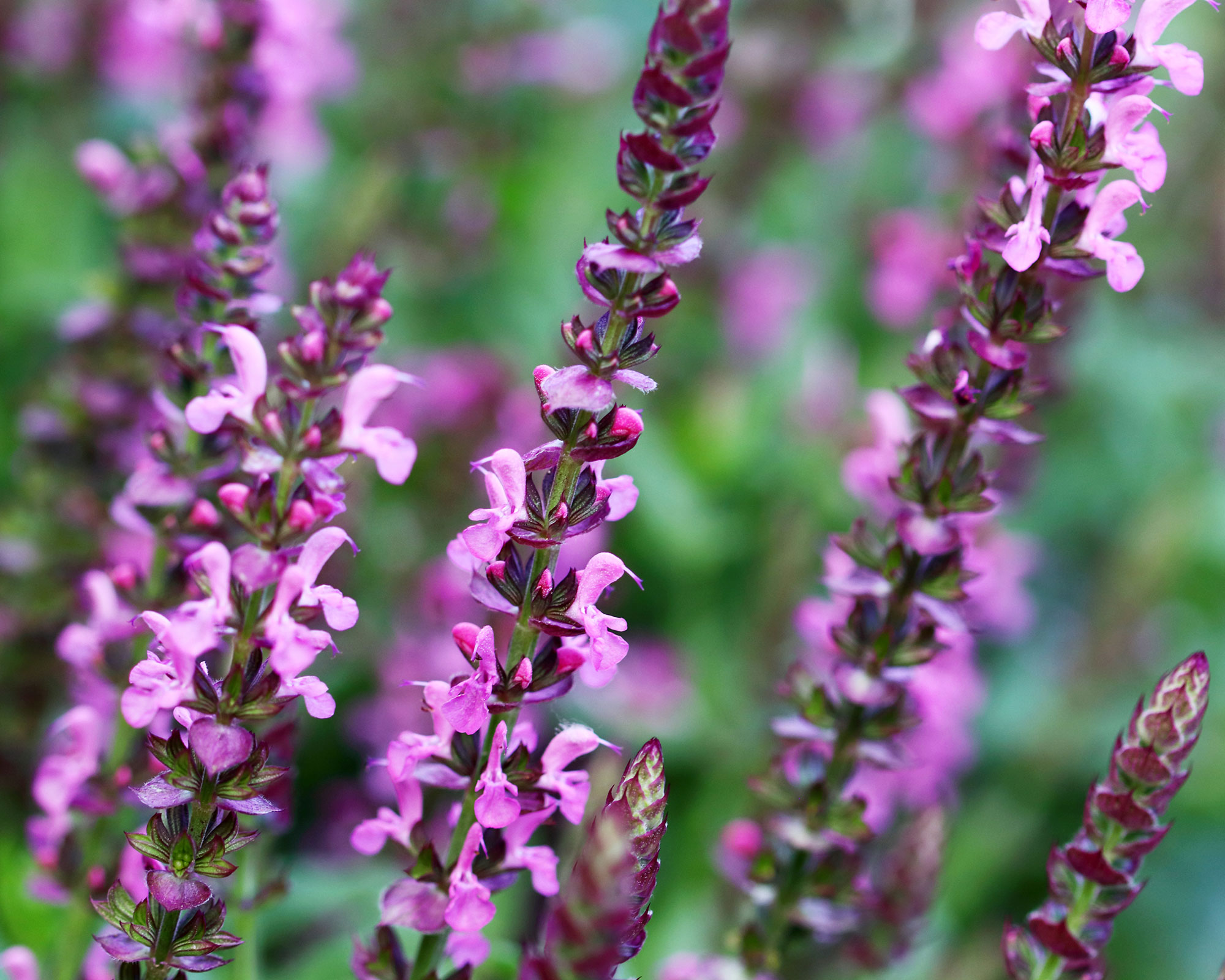
With spikes of vivid rose pink petals from July to September, this is an exquisite combination of color and scented foliage. Another relatively short plant at 1.5ft x 1.5ft (45cm x 45cm), it is a lovely way to add a touch of romance to the front of a border.
8. Salvia 'Clotted Cream'
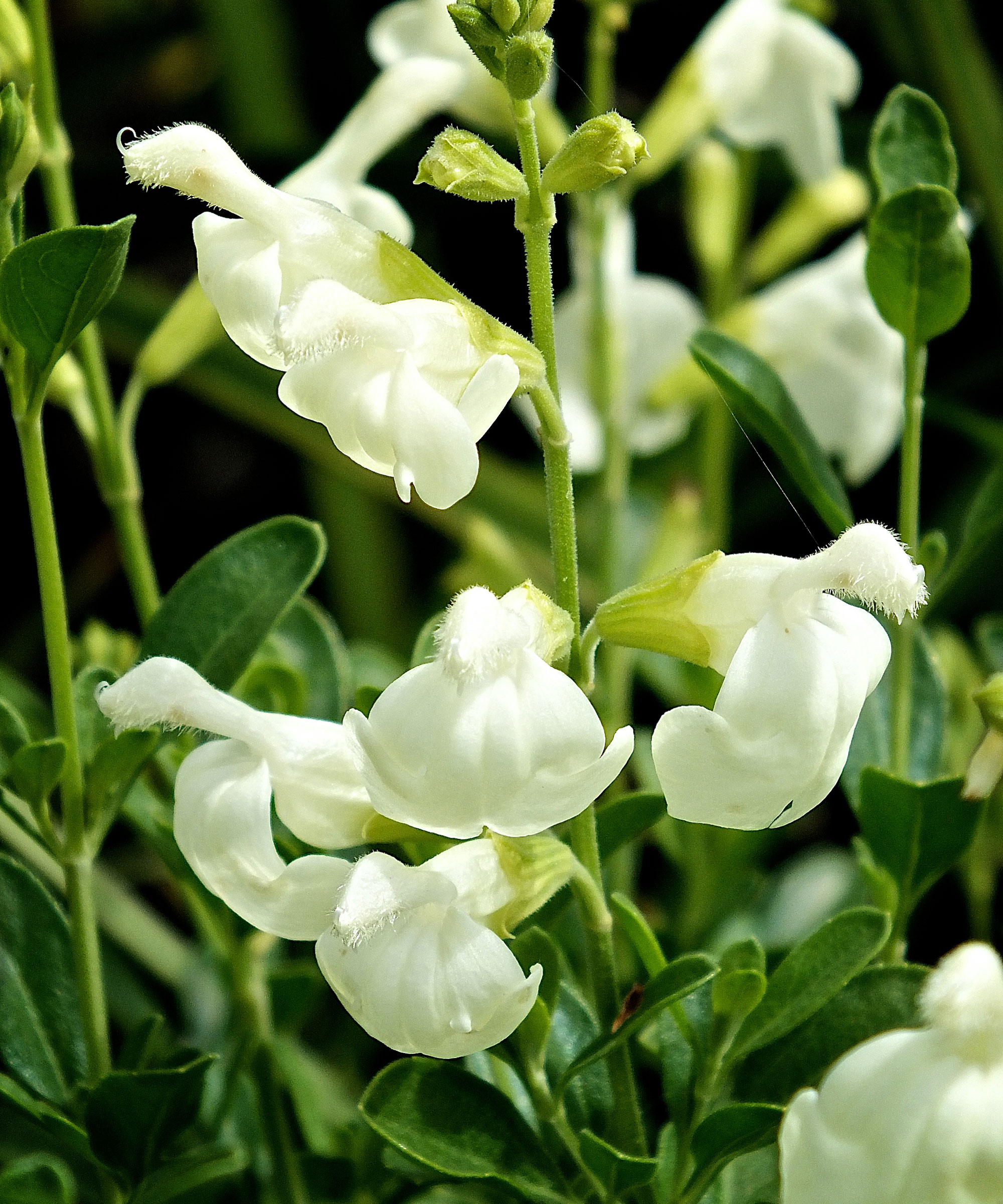
If you like white themed garden color schemes you'll love this pale and creamy variety of salvia with its pretty scented foliage. It's a highlight from early summer to late autumn, and bees love slipping inside the wide-mouthed blooms.
It will grow to about 3ft (90cm) and spread to 2ft (60cm).
9. Salvia jamensis 'Nachtvlinder'
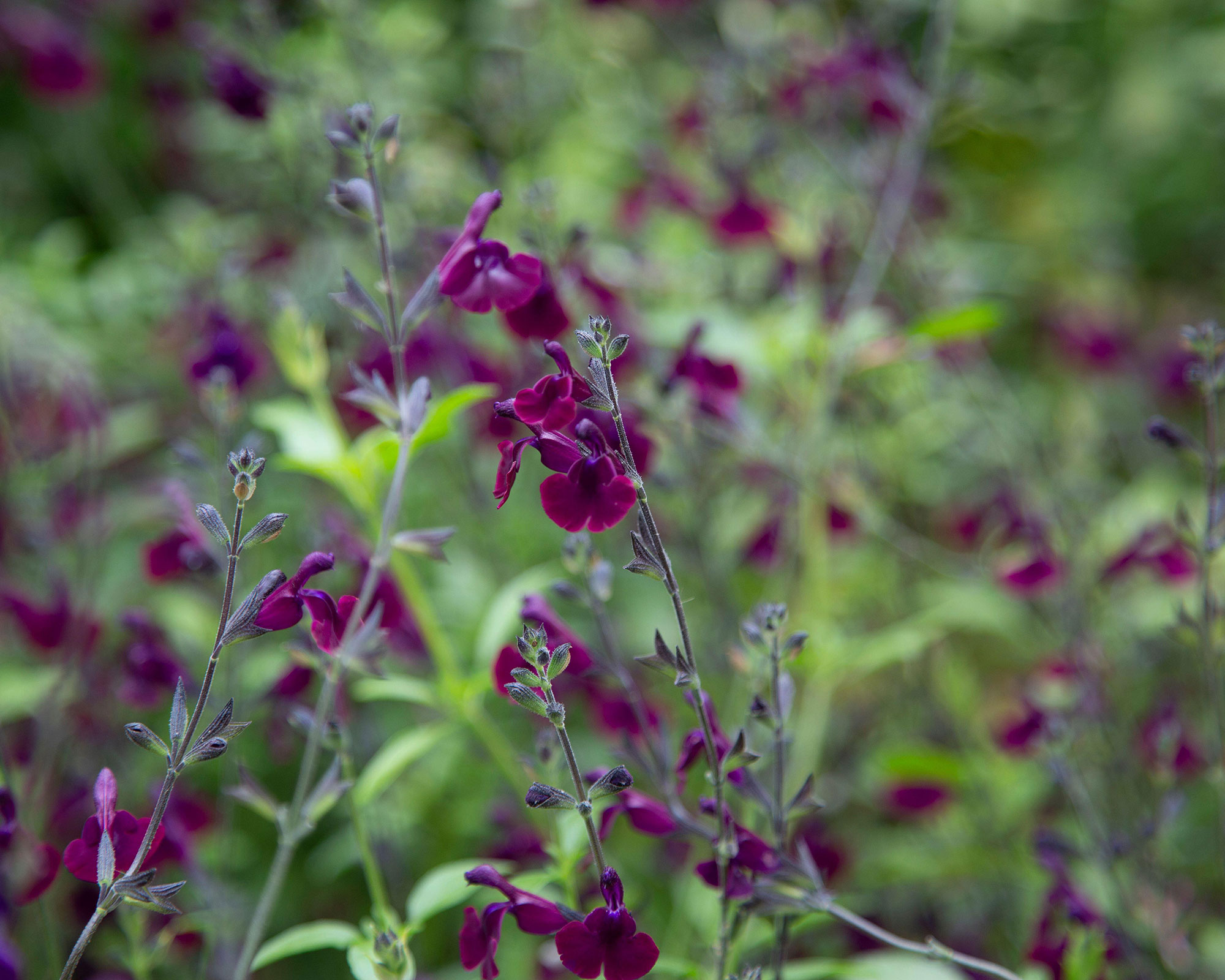
'Nachtvlinder' is a shrubby perennial salvia with masses of velvety deep purple flowers. It will add a touch of dark drama to your backyard and works particularly well in containers where the bees can buzz around the blooms.
It's not too large (1.1ft or 35cm high and 7.9in or 20cm wide), so is a good pick for small garden ideas, too.

Lifestyle journalist Sarah Wilson has been writing about gardens since 2015. She's written for Gardeningetc.com, Livingetc, Homes & Gardens, Easy Gardens and Modern Gardens magazines. Having studied introductory garden and landscape design, she is currently putting the skills learned to good use in her own space where the dream is establishing a cutting garden.
